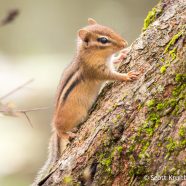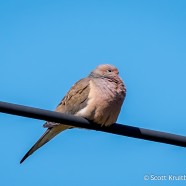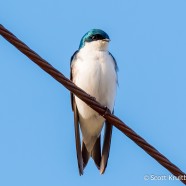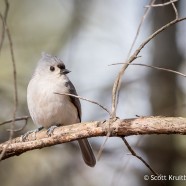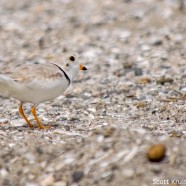Young Chipmunk
This adorable little Eastern Chipmunk (Tamias striatus) liked me enough to stay on its tree and say hi for a minute before dashing back down underground. Now if this young one would only please remember to stay out of most of these trees and bushes when it grows up because I would rather it choose food other than young birds or eggs from nests each spring. Thanks in advance, pal! Scott Kruitbosch Conservation & Outreach Coordinator
Read MoreMourning Dove
This Mourning Dove was doing what many birds had been recently – hanging out in the warm sun wondering why it was so cold again! But those days are over as we accelerate with rapid nesting and hope that temperatures stay away from the freezing mark or anything near it. What sort of nests and eggs do you have in your yard already?
Read MoreTree Swallow
Happy Easter! This Tree Swallow is one of many returning individuals migrating north this March, heading back to your yard or patch for the spring nesting season. I thought I would show you this bird from last week instead of showing you some eggs from past years and remind everyone to clean out their boxes now! Birds will be pairing up and starting to build those nests next month. After a cool start to April the long-term forecasts for spring look very warm, and there will be plenty of bugs for these birds to eat. Don’t forget to help them out with the spring cleaning… Scott...
Read MoreTufted Titmouse
This cute Tufted Titmouse may be building a home soon, if it is not already, depending on where you live. Have you ever put out dog fur for them to use as nesting material? Titmice, and other small songbirds that use nestboxes and cavities like the Black-capped Chickadee, will take fur that you put out in say, an empty suet cage, and use it to line their nest. Some have even been known to try to pull the fur right off a dog or another animal! You may want to be sure, of course, that the fur is free of any parasites or chemicals and is otherwise clean. They will readily pull out very large...
Read More2015 Waterbird Results
The Connecticut Department of Energy and Environmental Protection’s Wildlife Division (CT DEEP) has now released the official nesting results for the state-threatened Least Tern and the federally-threatened Piping Plover from the 2015 monitoring season, and the Audubon Alliance for Coastal Waterbirds (AAfCW) – Audubon Connecticut and the Roger Tory Peterson Institute of Natural History – has completed our American Oystercatcher report. The first bit of fantastic news is that we hosted a new all-time high number of Piping Plover pairs in the state with 62 attempting to breed...
Read More



